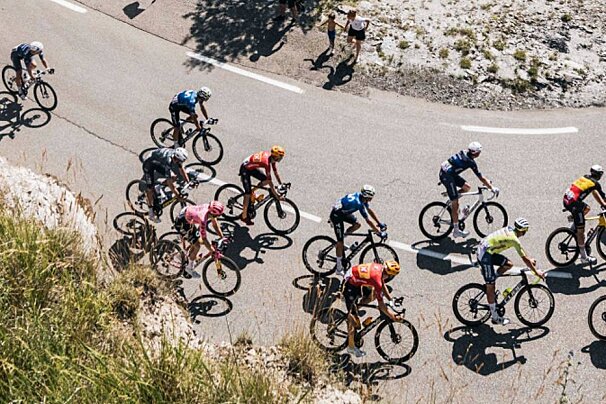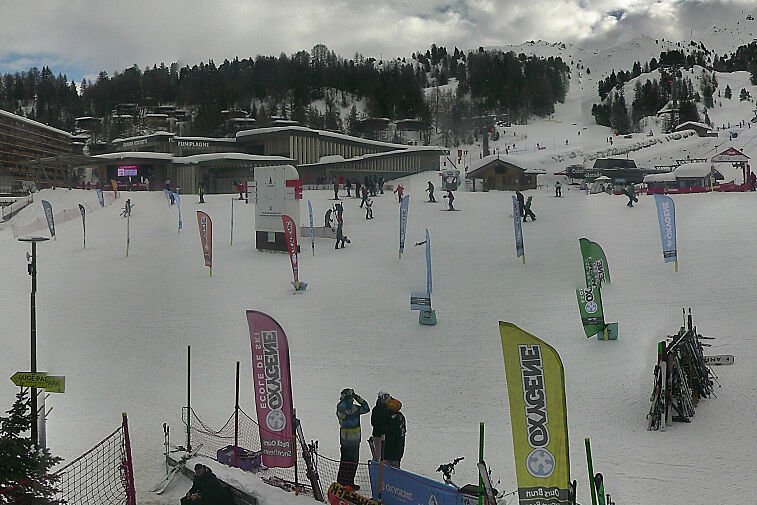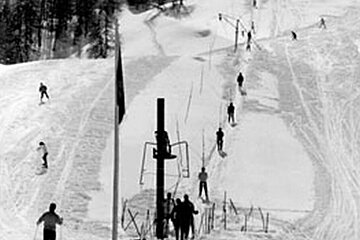

© SeeLaPlagne.com

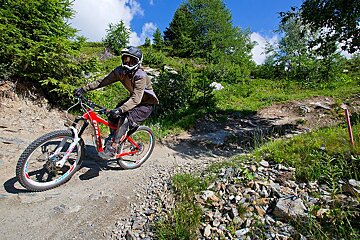
© Tom Humpage
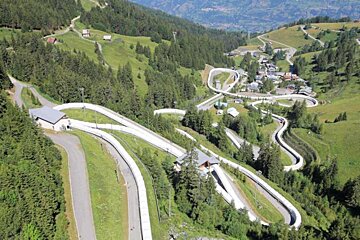
© Savoie Mont Blanc
History of La Plagne
Discover the La Plagne of yesterday
La Plagne as a ski resort was created in 1961; the traditional livelihoods of agriculture and mining were no longer sufficient to support the local population and young people were moving away to nearby cities such as Lyon and Chambery to find work elsewhere.
In 1960 the towns of Aime, Bellentre, Longefoy and Macot created an association to protect the interests of the local community. Under the guidance of Dr Borrione, the mayor of Aime, La Plagne opened its first ski lifts in December 1961. It was a modest start, just two drag lifts serving four slopes, but it was the beginning of the regeneration of a dwindling community.
Early history
The history of the local area goes back farther than the creation of the ski resort. There are many buildings and artifacts that are testament to a bygone time that can still be seen. Aime is the place to head for museums and exhibitions; the Musée de Pierre Borrione charts the local history back to the Gallo-Roman era and has a collection of Roman relics, Baroque artworks and other items of interest. The 11th century Basilica of St Martin was one of the first Christian churches and has had a long and eventful history; it is crammed full of beautiful frescoes, sculptures and architectural features. You can visit the crypt and the ambulatory to discover more about the religious life of the middle ages.
Champagny en Vanoise still retains many of its traditional features and weekly guided tours are led by local historians each week. The plain exterior of the Church of Saint Sigismond belies its extravagant Baroque interior; the church has been standing since it was rebuilt for the third time in 1683. Longefoy, near Montalbert, is another village that has strong roots with its past; here you can visit the 17th century bread oven, the old mill, the Baroque church and the vaults. There are various cultural walks and tours you can take, please ask at the tourist office for details.
Development through the ages
La Plagne first developed in the early 19th century due to the silver that was to be found in the lead mines around the slopes. These mines became refuges for members of the French Resistance during the Second World War, a place where they could hide out and test their weapons without fear of discovery.
The mines were also used to hide munitions that were dropped by British troops before being distributed further afield, there is a war memorial in Plagne Centre to the British air crews that were involved in such operations. ‘Mont de la Guerre’ above Champagny is named in memory of the conflicts that took place between locals and German soldiers.
Recent history
The resort was designed by Michel Besançon, who had a vision of an ‘integrated resort’. By this he meant a ski in-ski out resort where life in the residences, shops and restaurants was directly linked to life on the mountain. It was to be a pedestrian resort, where freedom of movement was key. The emphasis on the bustle of the town being conducted at the foot of the pistes, the ‘front de neige’, ensured that skiers and pedestrians were all part of the same experience.
The initial success of the resort owed much to local ski champion, Emile Allais, former world champion of the 1937 Winter Olympics held in Chamonix and creator of the Ecole de Ski Français. After retiring from his role as technical director in Courchevel; in 1964 he came to La Plagne as a technical director. Early publicity also played a large part; in 1966 French TV presenter Guy Lux broadcast "Interneiges", a live competition between two French resorts (kind of like It’s a Knockout in the snow), from La Plagne.
Over the years La Plagne grew in both size and stature. Further resorts were created out of the surrounding villages and more lifts were built to link this ever-increasing ski area, each one with its own character and atmosphere. In 1982 the original resort of La Plagne was renamed Plagne Centre, to reflect the fact that La Plagne was now a larger resort encompassing a handful of smaller villages. Throughout the 1970’s and 1980’s the resorts of Champagny en Vanoise, Aime la Plagne, Plagne Villages, Plagne Bellecôte, Les Coches, Montalbert, Belle Plagne and Plagne 1800 all opened as ski resorts and began to operate under the La Plagne banner. Plagne Soleil was the last resort to be developed, not opening until 1990.
La Plagne was in the limelight once more in 1992 when Albertville hosted the 16th Winter Olympics. La Plagne built the only Olympic Bobsleigh Piste in France and was one of the highlights of the competition. The bobsleigh is still used for world and European events, as well as being one of La Plagne’s most popular attractions. A number of rides such as the bob-raft, taxi-bob and mini-bob let you feel the speed and excitement of bobsleigh for yourself!
Already a huge ski area, La Plagne joined forces with Les Arcs in 2003 to create the vast Paradiski. This was made possible with the building of the Vanoise Express; the enormous double-decker cable car that links Les Arcs and La Plagne. The opening of the cable car enabled the creation of the Paradiski, an enormous ski area that spans 425km and 236 runs (and that’s just the pisted area!). It can carry 2000 people per hour and takes just four minutes to travel between its two stations at Plan Peisey (Les Arcs) and Les Coches (La Plagne). In the year of its opening it was the biggest, longest and fastest cable in the world. It has since been beaten by the 3S gondola in Austria, but nevertheless it is still an impressive ride!























